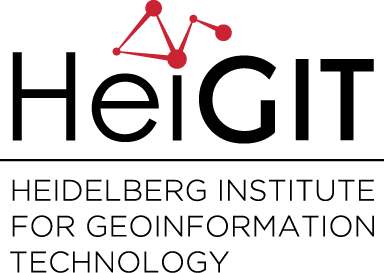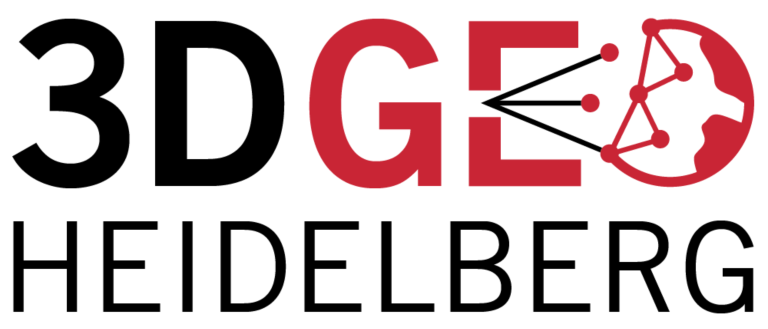Category: Research
-
New OpenRouteService QGIS Plugin
Finally there is a new version of the QGIS plugin for OpenRouteService: ORS Tools. It gives easy access to our directions, isochrone and matrix API’s from within QGIS. The old plugin OSM Tools plugin has been deprecated due to its name being too generic. However, the name is not the only thing that changed: Create…
-
Plausible Parrots – HeiGIT’s OSHDB Supports Research in Citizen Science Data Quality
In the GIScience research group at Heidelberg University, a recent PhD research project by Clemens Jacobs has been looking into the data quality of citizen science observations of organisms. This research aims at using geographic context as an information source for estimating the plausibility of an observation, e.g., of a bird, which was reported to…
-
Put the world’s most vulnerable people on the map with MapSwipe
Humanitarian organizations can’t help people if they can’t find them. This was the simple reason to create MapSwipe back in 2016 and it is still as pressing as in the very beginning. In the last 2,5 years volunteers have contributed more than 18,000,000 results, which help humanitarian organizations to create maps of human settlements and…
-
Lukas Winiwarter wins Karl Kraus Award 2019
Our team member Lukas Winiwarter was awarded the prestigious and competitive Karl-Kraus-Nachwuchsförderpreis 2019 for his outstanding research that he did in his diploma thesis. His research “Classification of 3D Point Clouds using Deep Neural Networks” was compiled at the TU Wien (and also at University of Stuttgart in a research visit) under the guidance of…
-
Publication of multi-sensor data from Arctic Siberian permafrost site
A 16-year record (2002–2017) of permafrost, active-layer, and meteorological conditions at the Samoylov Island Arctic permafrost research site, Lena River delta, northern Siberia was just published in Earth System Science Data. The long-term observational data is complemented by high-resolution topographic data acquired by terrestrial laser scanning (TLS) in 2017, when the 3DGeo Research Group joined…
-
Mapping ecosystem services – the example of crop pollination
Pollination by animals is an important service for wild plant communities as well as for agricultural crops. The service is mainly provided by insects, especially honeybees and a wide range of wild bees but also butterflies. A large number of crops depends globally on this pollination service – examples are apples, oranges, cocoa, coffee, strawberries…
-
How to become ohsome part 3: Identifying different mapping schemes
This is your first blog of the ohsome series? Before you might be confronted with any potential spoilers, you should better check out the first and the second part of this blog series (or the intro to the idea and general architecture) to be on the safe side and up to date with the current content. So…
-
HeiGIT and German Red Cross representation at DLR Humanitarian Technology Days 2019
Last week, Michael Schultz (GIScience Research Group) attended the Humanitarian Technology Days 2019 that was organized by the German Aerospace Center (Deutsches Zentrum für Luft- und Raumfahrt, DLR) as a representative of the GIScience Research Group/ HeiGIT and of our collaboration with German Red Cross. For two days, around 80 scientists, humanitarian actors and funding…
-
How can LiDAR data help to understand early Olmec subsistence in Mexico?
From their beginnings some 4,000 years ago to their decadence around 400 b.c., the Olmec people achieved a high level of sociopolitical complexity and dominated their native geographic territory, the southern Gulf Coast of Mexico. The first Olmec capital of San Lorenzo, Veracruz, was the only site in Mesoamerica that produced imposing monumental stone sculpture…
-
New Highlights at STAP19
Three invited speakers are now joining the compact course and workshop STAP19 on Spatial and Temporal Analysis of Geographic Phenomena organized by the 3DGeo and FCGL at IWR in Heidelberg. Dr. Gottfried Mandlburger (Institute for Photogrammetry, University of Stuttgart) will give a talk on methods of feature and information extraction from geographic 3D point clouds.…
-
The future of OpenMapSurfers tiles
OpenMapSurfer is the name of a web tile service based on OpenStreetMap data developed by Maxim Rylov and hosted by the Heidelberg Institute for Geoinformation Technology. The map style is a general purpose “basemap” layer featuring some unique properties, such as high cartographic quality label placement, see floor bathymetry, and a pleasant warm color scheme.…
-
Teaching geodata acquisition in and around Heidelberg
As part of the lecture “Geodatenerfassung”, geography students in their first semester turned theory of digital geodata acquisition into practice. Based on their aims and requirements, the students acquired geodata with different methods and sensors. Using a high-end Riegl VZ-2000i terrestrial laser scanner, two groups captured the old town of Heidelberg and a limestone quarry…


